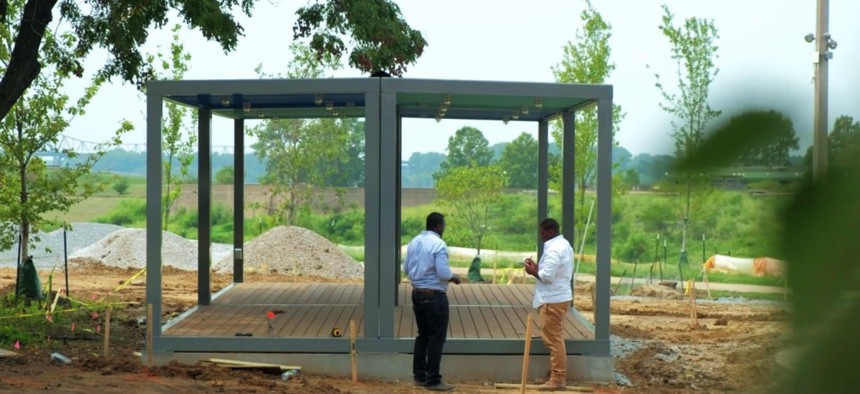A New Placemaking Center to Guide Changing Demographics and Technology

Brookings Institutions’ Bass Center for Transformative Placemaking wants to connect more residents to opportunities using cutting-edge development practices, tools and policies.
WASHINGTON — The Brookings Institution announced Wednesday the launch of its Anne T. and Robert M. Bass Center for Transformative Placemaking, focused on improving economic outcomes for residents through thoughtful development of public spaces.
Placemaking can occur at the regional, city or street level. Rather than simply creating great public spaces, the practice focuses on creating an environment that is welcoming to all kinds of residents, regardless of age, race, ethnicity, gender, sexual orientation, or income.
While college-educated millennials with good incomes are repopulating many cities’ downtowns, less well-to-do outlying areas continue to struggle.
“Despite what we read in the urban press, there are far more neighborhoods that are declining than gentrifying,” said Carol Coletta, president and CEO of Memphis River Parks Partnership.
Communities need to make targeted investments if anyone other than tech-oriented workers are to benefit, said Jennifer Vey, senior fellow with Brookings’ Metropolitan Policy Program.
In looking at cities to base its HQ2 (which actually turned into two new headquarters), Amazon opted for those with the largest pools of tech workers in the U.S.—highlighting the disparity between places with a talent pool attractive to large companies and others, Vey said.
The Bass Center will research new placemaking practices, tools and policies and encourage their implementation by federal, state, regional and local planners.
Placemaking could help undo generations of segregation and begin to connect entire cities to opportunities, Coletta said, as even today it’s rare for people of different incomes to live together.
“The demographic makeup of a neighborhood makes a difference in generational mobility,” Coletta said. “The worst place to grow up is a poor neighborhood.”
As people become more connected, their job prospects might also improve. Shauen Pearce, the director of economic development and inclusion policy in Minneapolis, noted that the city has 130,000 job vacancies and twice that number of unemployed residents.
“We continue to overlook the people that are bouncing from employment opportunity to employment opportunity,” Pearce said.
Coletta suggests redefining infrastructure to include parks and public spaces as a means of mitigating exclusion, as well as capitalizing on the “yes in my backyard” push for new development to make housing affordable and sustain mixed-income communities.
One of the reasons Amazon was drawn to Crystal City, Virginia is a proposal to create a $150 million not-for-profit fund that buys apartments in improving neighborhoods with a “flexible” pool of public capital, said Robert Stewart, executive vice chairman of JBG SMITH Properties.
Typical constraints on public capital include the time involved to secure it, the need for ongoing involvement, and competition from private capital. But by harnessing the “cheapest sorts” of capital on discounted terms from Fannie Mae and Freddie Mac, the fund may be able to use it to drive rent reductions and services—an innovation, Stewart said.
Small town and rural placemaking is trickier, as local governments often need to “just get out of the way” and “make the process easier,” said Patrice Frey, president and CEO of National Main Street Center, Inc.
With talent driven toward urban centers, rural areas must cultivate the local entrepreneurs in their midst while hanging on to the talent they already have, Frey said.
“Quality of place is essential to that,” she added.
Dave Nyczepir is a News Editor at Government Executive’s Route Fifty and based in Washington, D.C.
NEXT STORY: The Homeless Can’t Escape San Francisco’s Smoke-Ridden Air






